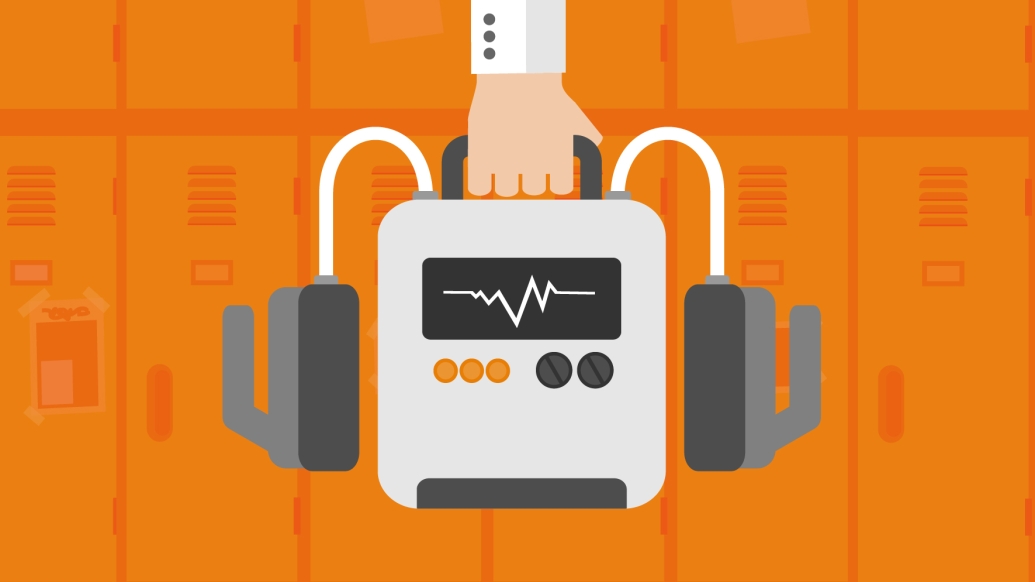AEDs are now commonplace in schools and other public places such as airports and shopping malls. But a U-M study shows that many schools may not be prepared to use them.
11:28 AM
Author |

Many public high schools have one or more automated external defibrillators (AEDs) on-site to assist in the event of sudden cardiac arrest. That's the good news.
But not enough teachers or staff members, a U-M study found, are trained to operate them.
"The sad part is when there's an AED available and it's not used because people don't feel comfortable with it," says Mark Russell, M.D., a pediatric cardiologist and professor of pediatrics at C.S. Mott Children's Hospital. "The readier you are, the better your outcomes will be."
When emergency response matters
In the past, schools would call an ambulance, then wait for them to bring in and execute the heart-shocking technology. As the devices have become cheaper and simpler to use in recent years, the onus for first response has shifted from EMS teams to educators.
Seconds count, after all, when responding to cardiac arrest: Each minute of delayed defibrillation reduces a person's chances of survival by 10 percent, says Russell, who co-authored the study, which was published in The Journal of Pediatrics.
Although sudden cardiac arrest in the young is rare, those at risk on school property aren't just kids. Schools are often host to large events such as plays and sporting events that draw attendees from throughout communities.
"Schools are really gathering places for the community, especially in small towns," Russell adds.
Any patient or child who suddenly becomes unresponsive needs to have an AED put on. The errors that have been made have been when people did not use them at all.Mark Russell, M.D.
Targeting shortfalls
Released in March, the study surveyed all public high schools in 30 randomly selected Michigan counties.
All responding schools confirmed they had one or more AEDs apiece, but the level of training and anticipated response times varied. A building with a large student body, for instance, was less likely to have multiple AEDs and or enough trained staffers — critical issues in a crisis.
Educators, too, ought to weigh their needs based on a school's square footage. "You want to have enough AEDs around the campus to get to the patient within two or three minutes," Russell says.
Large schools with minority student populations greater than 20 percent also had fewer available AEDs, the study found. And those with a high percentage of pupils on free or reduced-priced lunches were found to be less prone to have a cardiac emergency response plan and keep tabs on maintenance (AED batteries and pads of such devices should be checked at least annually, Russell says).
How to prepare
The electric device might seem imposing (or even risky) for people in an already-scary situation, but users needn't fear AEDs. Modern equipment, Russell says, is trained to detect a fatal heart rhythm — and if none is found, no shock will be administered.
Despite the machines' safeguards, training is essential to ensure optimal results. Nearly all victims require CPR prior to and after the use of an AED. Schools, likewise, also should prepare well in advance by having sudden cardiac arrest drills.
Which is why the cumulative groundwork is vital. Initiatives like the nationwide Project Adam work with schools to establish sudden cardiac arrest readiness programs. And the state of Michigan celebrates schools that meet preparedness criteria.
"Any patient or child who suddenly becomes unresponsive needs to have an AED put on," says Russell. "The errors that have been made have been when people did not use them at all."

Explore a variety of health care news & stories by visiting the Health Lab home page for more articles.

Department of Communication at Michigan Medicine
Want top health & research news weekly? Sign up for Health Lab’s newsletters today!





